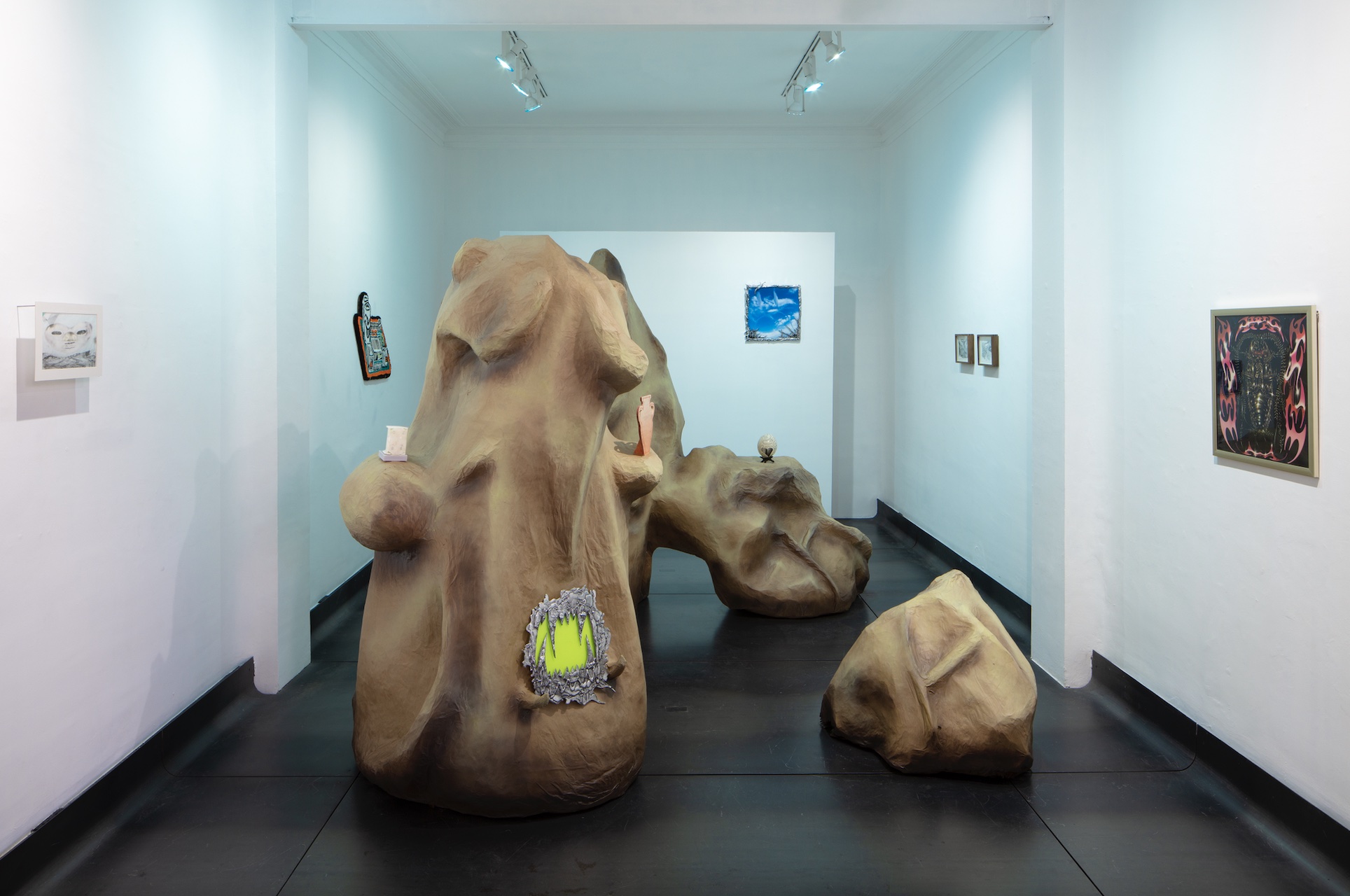
Review
Eggs, Clouds, and Scars: About 'Sentimientos Queloides' organized by Yope Projects at Galería Campeche
by Mariel Vela
Reading time
4 min
From the gallery's street-facing window, a structure is visible inside. Excesses of visual protein, protuberances that feel soft but appear rocky to the eye. Is it the materialization of a keloid feeling, or are the feelings it awakens in me keloid? A keloid is residual tissue from a provoked or accidental injury, leaving a visible mark on the skin's surface. The acne scars on my mom's face or the pink, elliptical border around my friend's navel where a piercing once was are adolescent drawings, reliefs of a life lived.
The exhibition Sentimientos Queloides brings together the work of 11 artists invited to collaborate through the practice of drawing in a broad and even experimental sense. In the exhibition text, Yope Projects mentions drawing as a physical and/or virtual space, as an inhabitant, a parasitic space. Just looking around the room, the question of what we call drawing metamorphoses to the extent that it is no longer of great importance to define it. What becomes relevant is to run one's eyes along the edge, like sliding a fingertip over a knee to remember a bicycle fall.
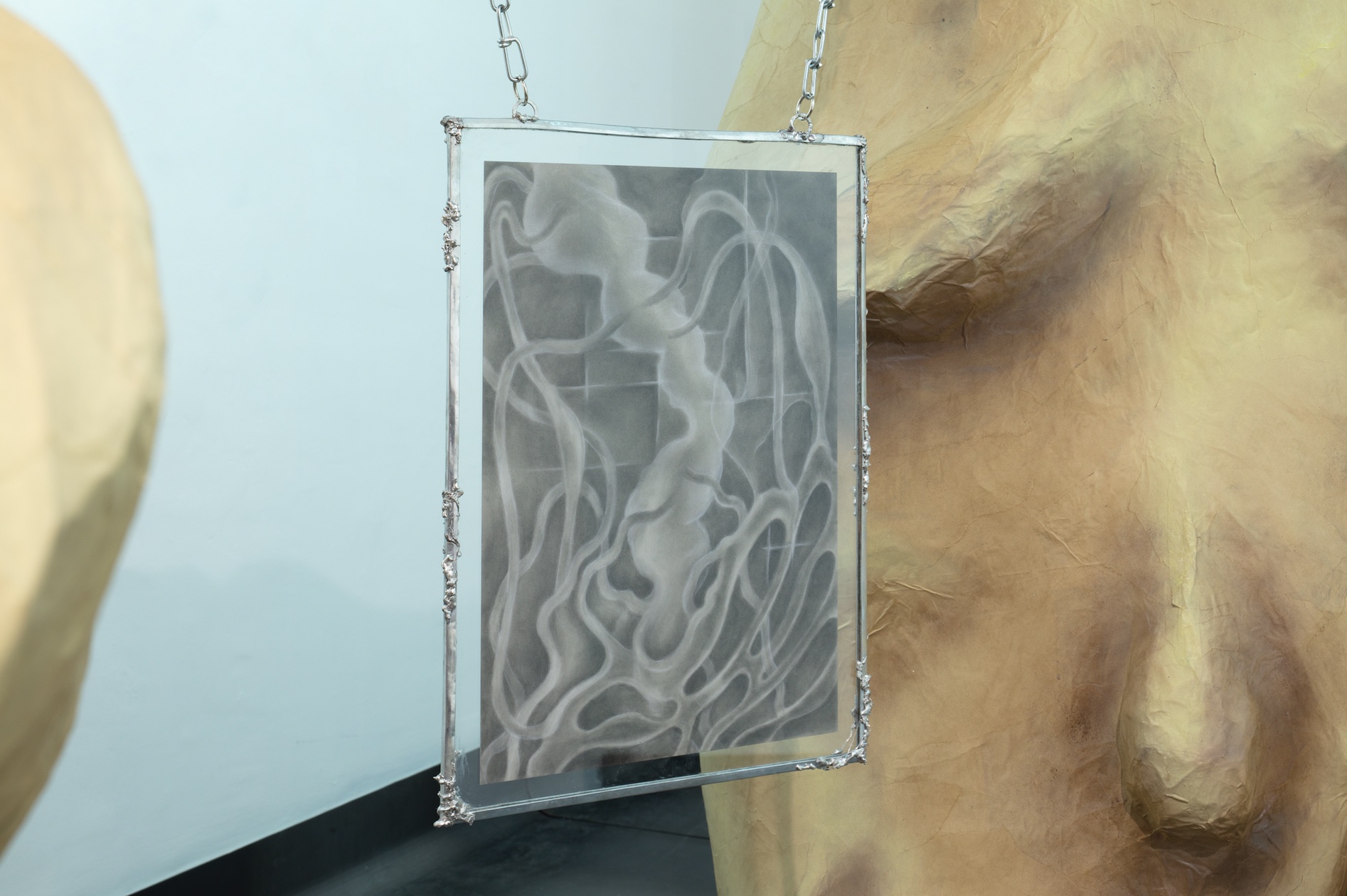
In the center is Sonia Bandura's Platelmintos, suspended by a chain that seems to have emerged from its zinc frame. A spatial tuber-like form mimics the volumes of the cartoonish rock from which it hangs; there is a dignity in graphite as matter that I had never noticed until now.
“There is no drawing that is not temporal, fragile, instantaneous, in a state of flux. You are looking, acting, and reacting while you are thinking and feeling, both analytically and instinctually. The drawing itself is simply the residue of such relations,” says artist and writer Amy Sillman. To think of drawing solely as a preliminary practice or as a stepping stone to larger projects is to deny that state of flow generated by aimless making, by ruminating with lines and shadows. I have seen others drawing absentmindedly, absorbed in the pleasure of inventing.
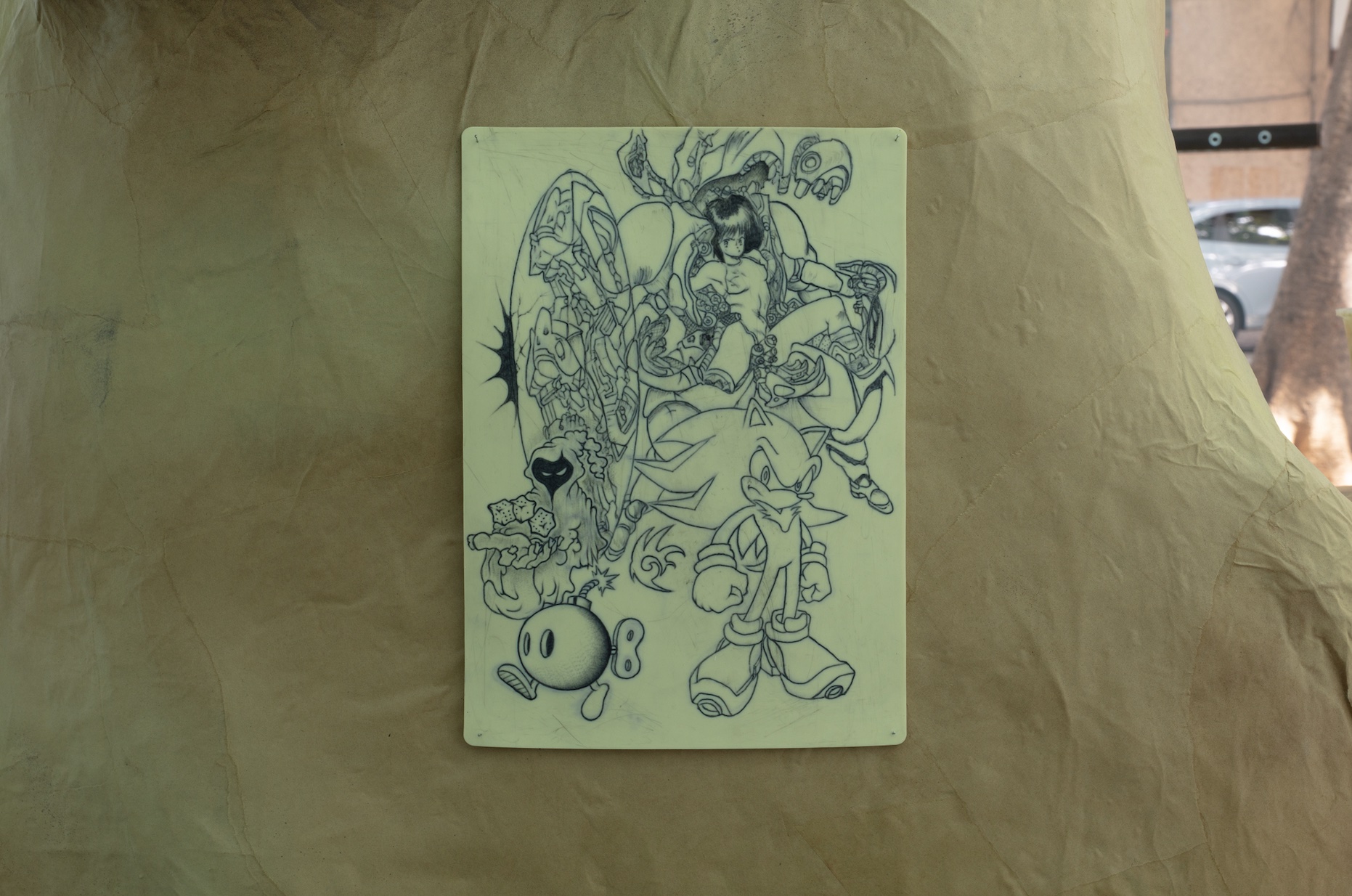
The pieces k99999 and k99999 (evil version) by Yope Projects are made with ink on synthetic leather and resemble the drawings made with Bic pens in the notebooks of friends during classes, and the tattoos scratched on thighs, forearms, or desk paddles. There's Sonic, the mascot of Sega Enterprises, and some manga characters I don't recognize.
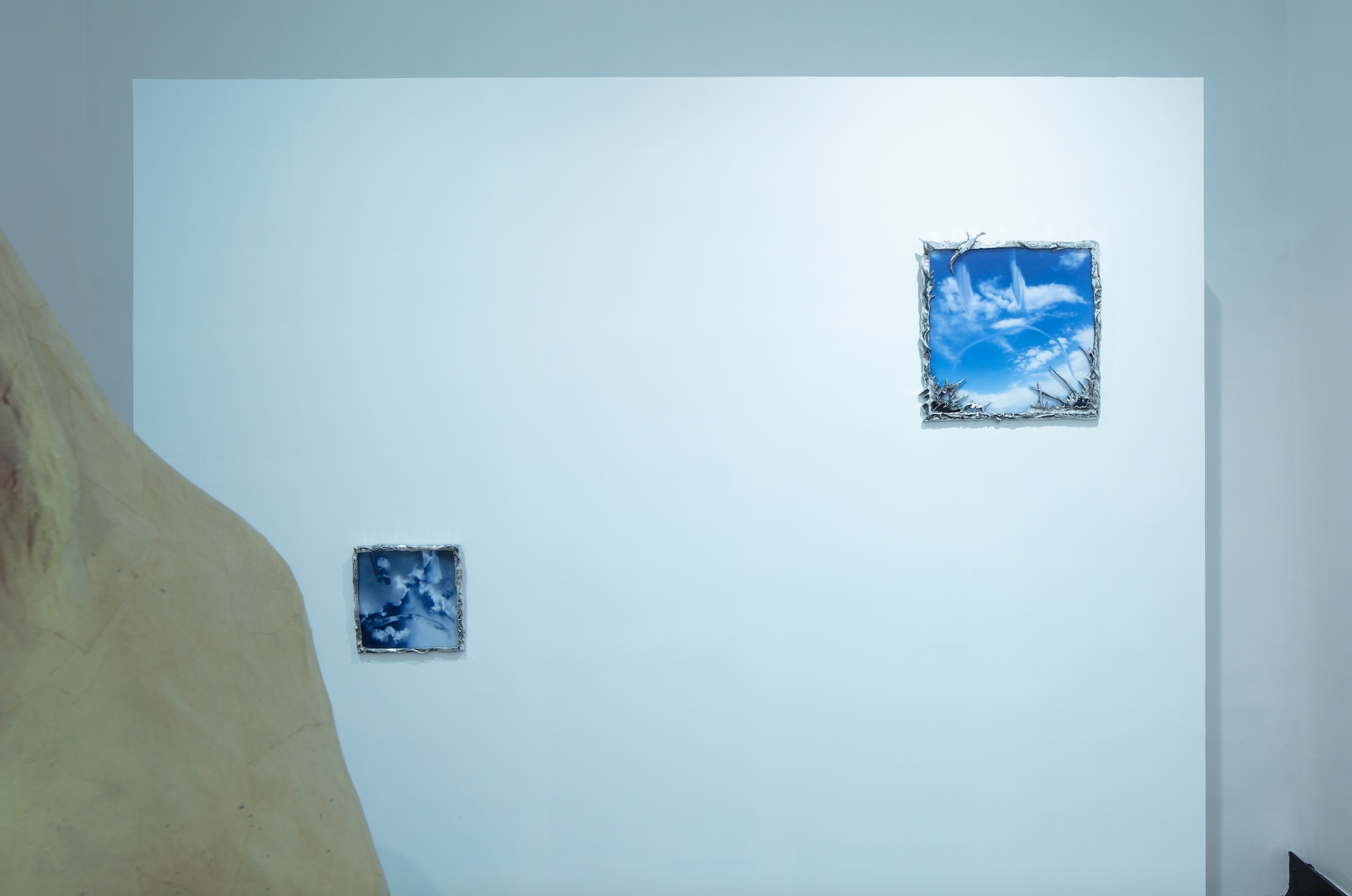
Sad Cloud I and Sad Cloud IV by Emilio Morales are UV prints on acrylic, mercury. Here, quartz or LED lights dry the ink instead of heat, producing a dreamy and slippery visual effect. I see the ink from which these clouds are made, dried by artificial suns, and I don't know when was the last time I looked for shapes of a puppy or a flying saucer in the clouds—an activity that undoubtedly entails something melancholic.
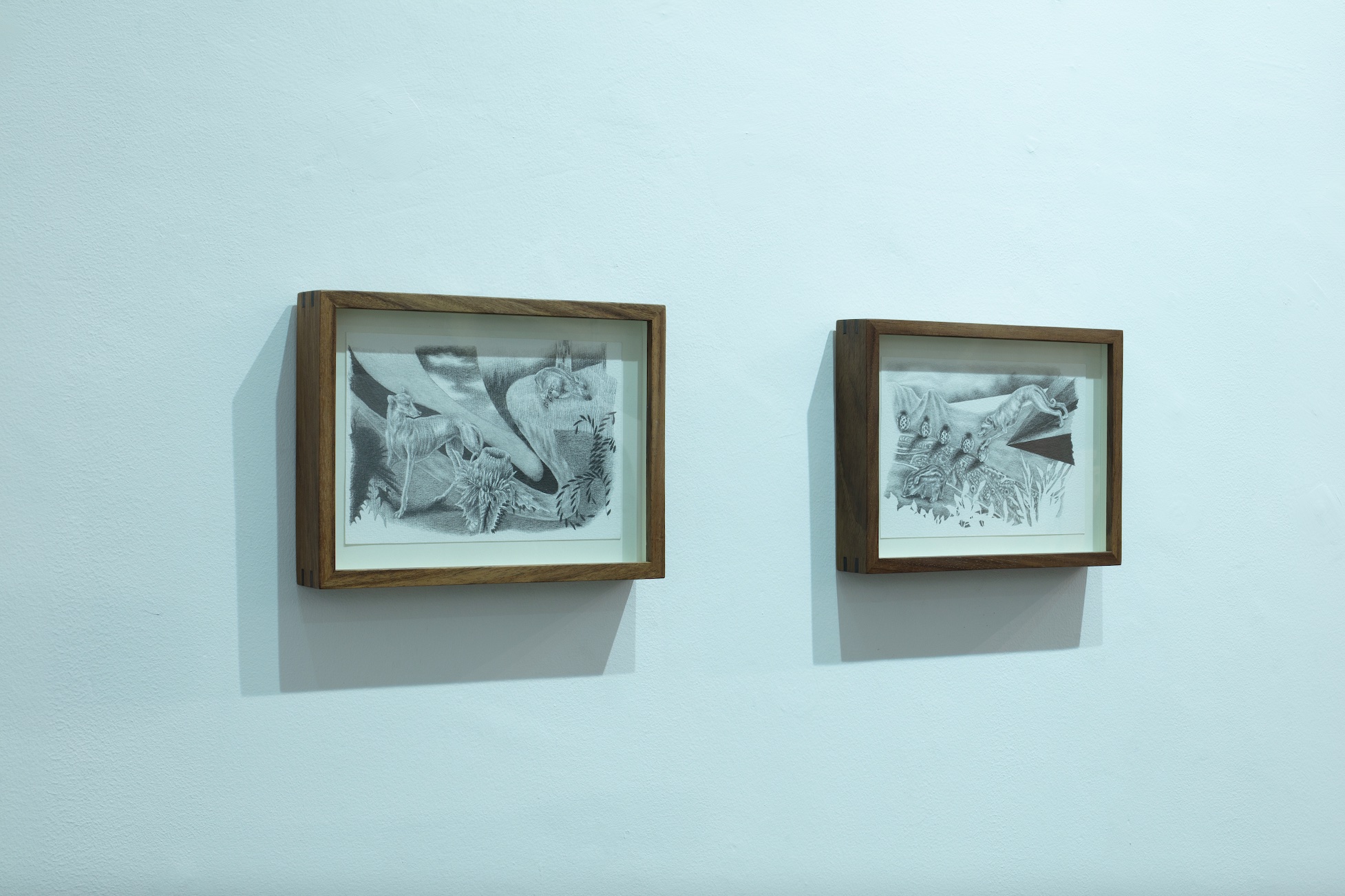
Ángela Ferrari's drawings are also reveries, perhaps figuratively represented by the little pig sleeping peacefully—without suspecting that it is being hunted by a greyhound or that it is ruminating on the white back of a thicket. There is the ostrich egg titled Wrought by Marián Roma, almost floating on a plain, medieval and domestic. Its calcium skin reveals an ejaculation, a dragon's wing, and a heart.
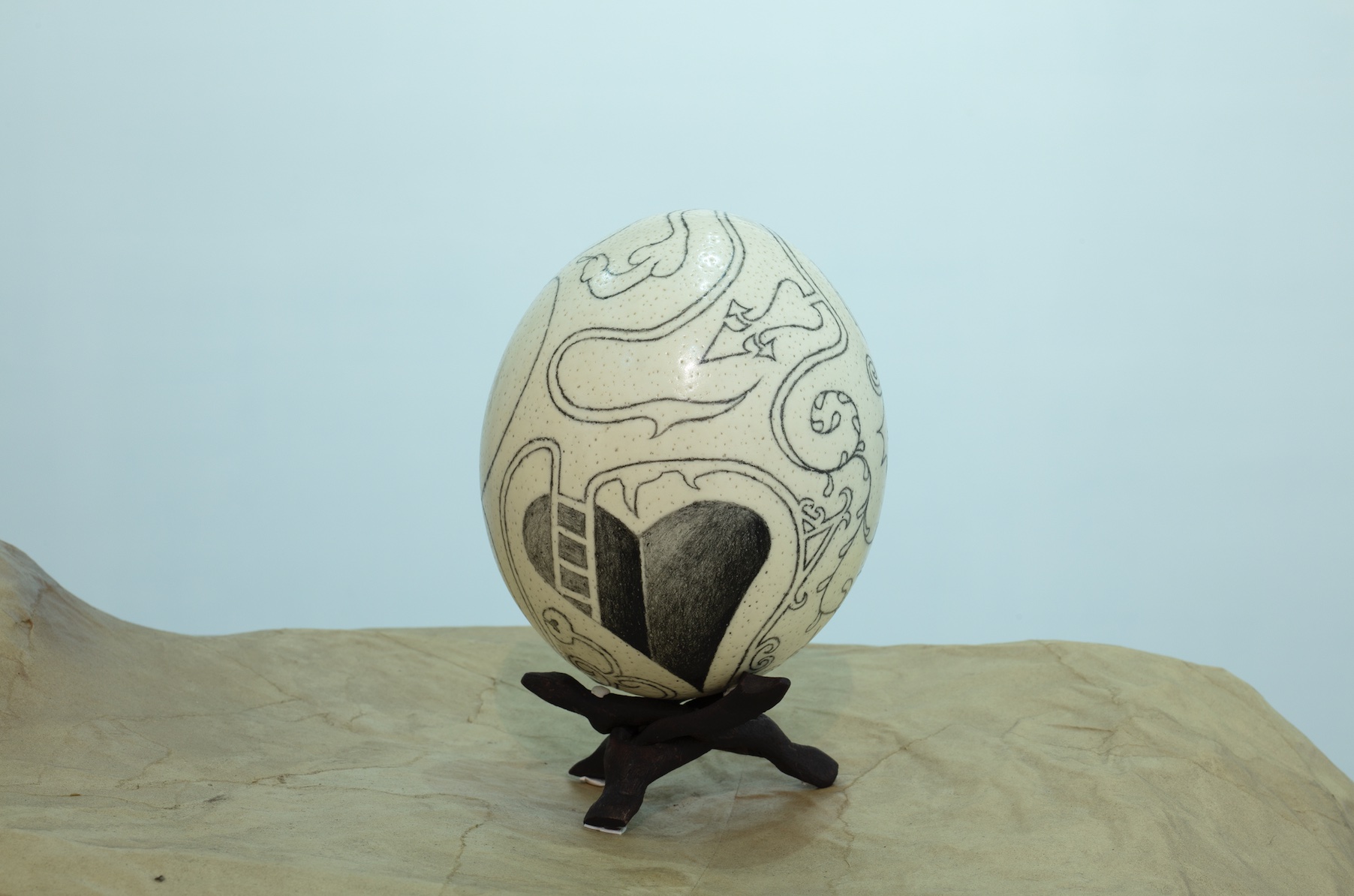
Spontaneous generation is an obsolete hypothesis about the origin of life that holds that certain forms arise "spontaneously" from organic or inorganic matter or a combination of both. Though never proven by scientific method, it was suggested by visual evidence. In the exhibition Sentimientos Queloides, this hypothesis does not feel obsolete. I believe again in the emergence of forms, giving birth to themselves.
Translated to English by Luis Sokol
Published on July 6 2024